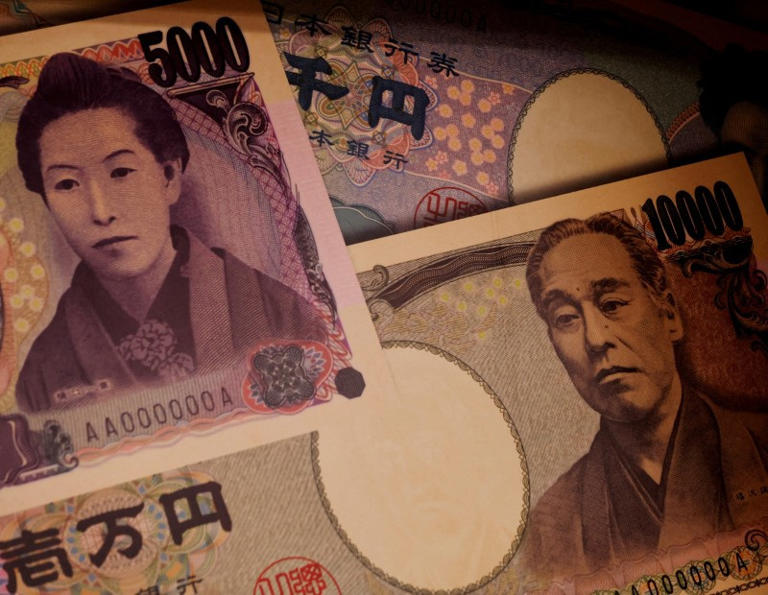Yen’s Volatility and Global Currency Market Dynamics Amid Bank of Japan Uncertainty
On Thursday, the Japanese yen displayed notable volatility, following a sharp drop in the previous session. This recent instability highlights the fragile sentiment among investors as they assess the unwinding of popular carry trades and speculate on the future trajectory of Japan’s monetary policy. The yen’s fluctuations are emblematic of a broader trend of uncertainty in global currency markets, driven by shifting economic indicators and central bank policies.
Yen’s Recent Fluctuations
As of Thursday, the yen was trading slightly stronger at 146.09 per dollar. This modest recovery comes after the currency experienced a significant decline of 1.6% on Wednesday. This drop was primarily influenced by comments from Shinichi Uchida, Deputy Governor of the Bank of Japan (BOJ), who downplayed the likelihood of an imminent increase in interest rates. Uchida’s remarks have contributed to a volatile market environment, as investors weigh the implications for the yen and broader financial stability.
Earlier in the week, the yen had reached a seven-month high of 141.675 per dollar, a stark contrast to its 38-year lows recorded in early July. The yen’s rise during this period was largely attributed to a surprise rate hike by the BOJ, which led investors to unwind their carry trades. These trades involve borrowing yen at low interest rates to invest in assets denominated in higher-yielding currencies, such as the dollar. The BOJ’s unexpected rate increase prompted a significant exit from these trades, contributing to the yen’s appreciation.
BOJ Policy and Investor Sentiment
A summary of opinions from the BOJ’s July policy meeting, released on Thursday, revealed a range of perspectives among board members regarding future monetary policy. Some members advocated for further rate hikes, suggesting an increase to around 1% to address ongoing economic conditions. This divergence in opinions underscores the challenging task facing the central bank and has added to market uncertainty.
Vasu Menon, managing director of investment strategy at OCBC, commented that while the BOJ may have paused its rate hikes for the time being, it is likely to continue progressing towards policy normalization in the months ahead. Menon cautioned that the market remains vulnerable to negative news and global uncertainties, which could further influence currency movements and investor sentiment.
Impact on Global Currencies
The yen’s volatility has had a ripple effect on other major currencies. The dollar index, which measures the U.S. dollar against a basket of six major rivals, rose to 103.08. This level is near the seven-month low of 102.15 that the index touched on Monday. The euro remained steady at $1.09285, while the British pound hovered around $1.26865, close to a one-month low observed earlier in the week.
Traders have adjusted their expectations for the Federal Reserve’s monetary policy in response to the evolving economic landscape. Market participants anticipate a 50 basis point rate cut at the Fed’s next meeting in September. However, there is also a 26.5% chance of a smaller 25 basis point reduction. Earlier in the week, markets had fully priced in a 50 basis point cut and even considered the possibility of an emergency rate reduction before the September meeting. These expectations have moderated as market conditions have stabilized.
Upcoming Economic Indicators
Looking ahead, investor attention will focus on several key economic indicators and central bank events. The U.S. consumer price inflation report for July, scheduled for release next week, will be closely scrutinized for insights into inflationary pressures and potential impacts on monetary policy. Additionally, remarks by Fed Chair Jerome Powell at the Jackson Hole Economic Policy Symposium, set for August 22-24, will be critical in shaping expectations for future Fed actions and providing guidance on economic policy.
OCBC’s Menon advised investors to brace for continued market volatility, emphasizing that there is a significant amount of economic data and developments to consider before the next Federal Reserve meeting. This period of uncertainty will require careful monitoring of both domestic and global economic indicators to navigate potential risks and opportunities.
Regional Currency Movements
In the broader currency market, the Australian dollar experienced a modest gain of 0.14%, reaching $0.65275. The New Zealand dollar remained steady at $0.59985. These movements reflect ongoing adjustments in response to the evolving economic environment and central bank policies across various regions.
Overall, the yen’s recent volatility and the broader dynamics in the global currency market illustrate the complex interplay of economic factors and central bank decisions. Investors must stay vigilant to ongoing developments and prepare for potential fluctuations as new information becomes available, ensuring they can navigate the challenges and opportunities presented by these shifting market conditions.
